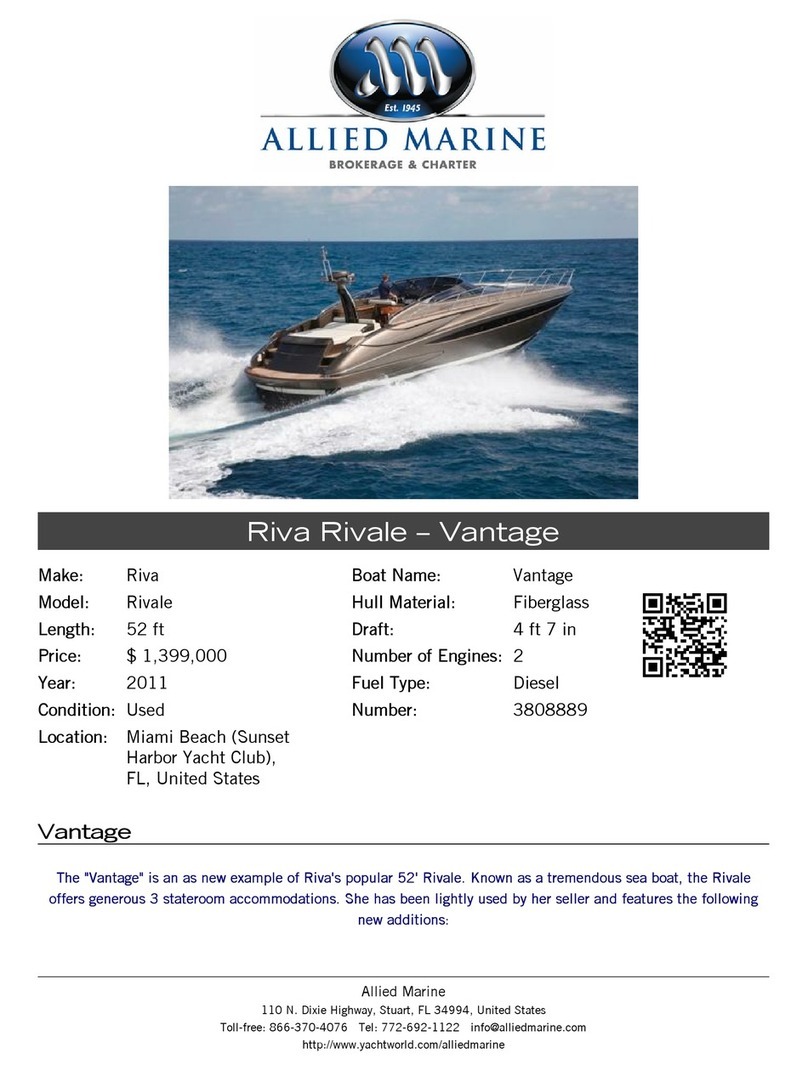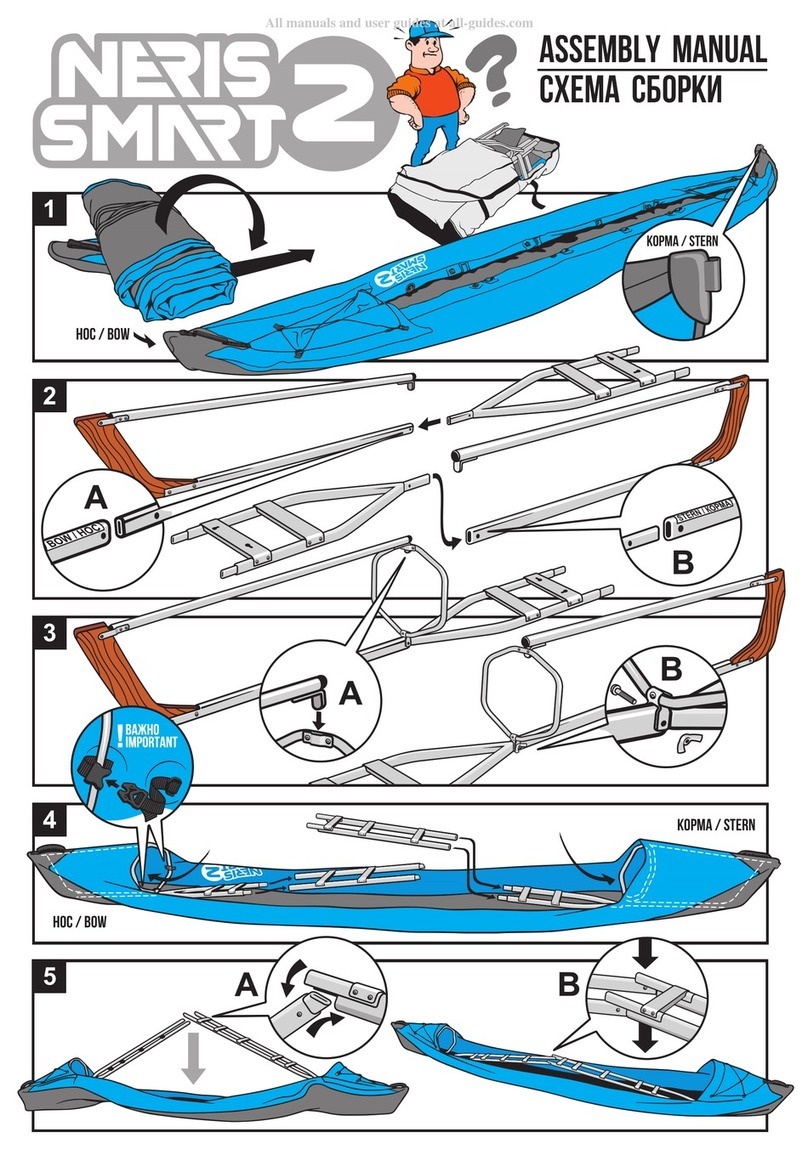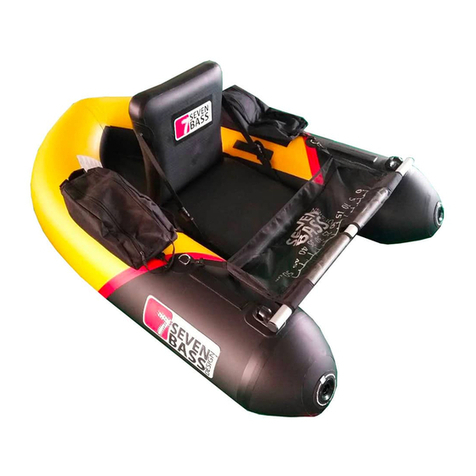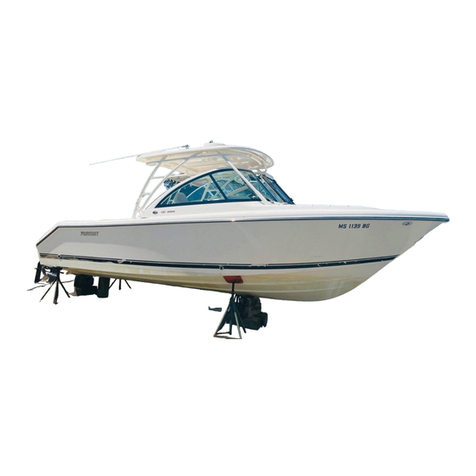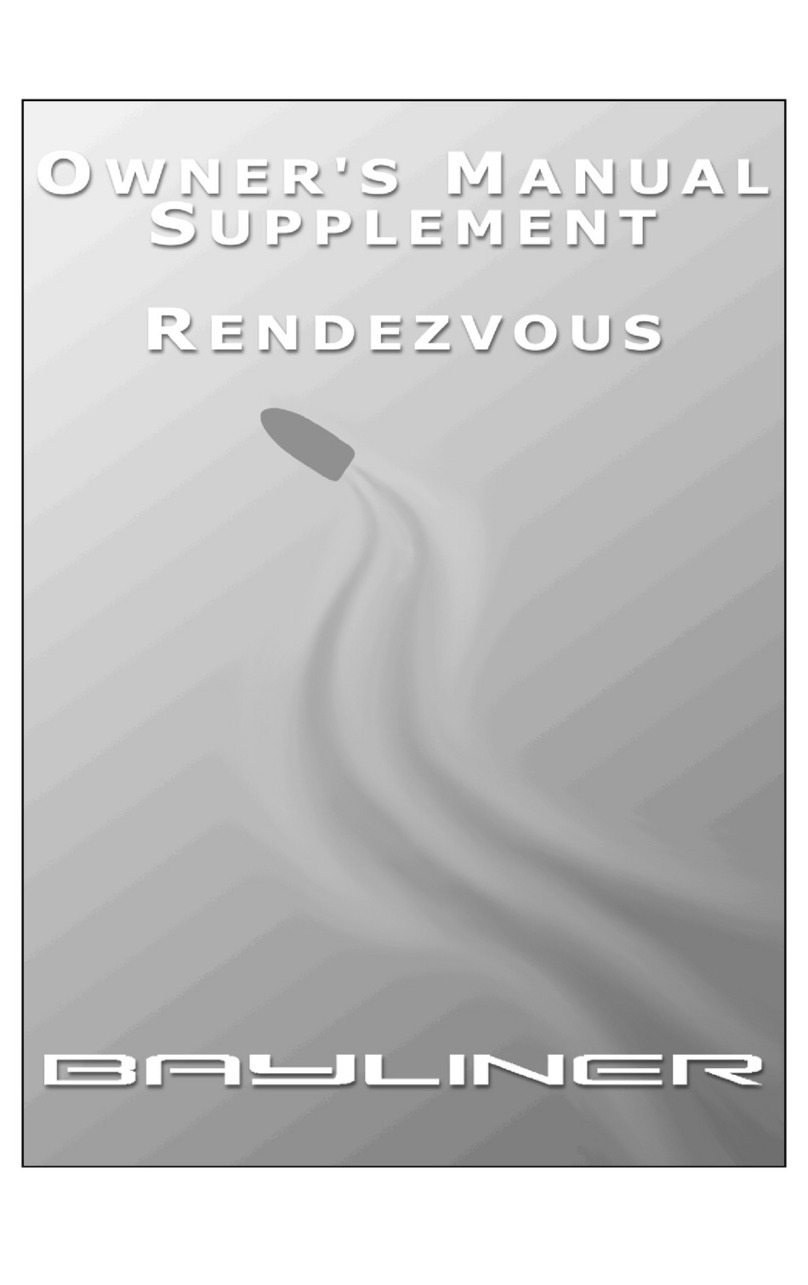
7
particular part of the rail or deck you choose as your reference point is not important as long as it is the
same point on each side After the mast is centered transversely, tighten both upper shroud turnbuckles
uniformly, one full turn on one side, then one full turn of the other. Repeat until the turnbuckles
become difficult to turn. Pin the turnbuckles Tighten up the lower shroud turnbuckle so that almost all
of the slack is removed. That is, the shroud itself should be able to flop about 1” in each direction.
Sight up the trailing edge of the spar to make sure that it is still straight. Now, check your rake. With
the main halyard hanging plumb behind the mast, the shackle end should be about one mast width
away from the back face of the mast, near the gooseneck. It’s best to do this on a calm day and to hang
a weight on the halyard such as a hammer, wrench, or bucket of water.
Ease off the forestay or backstay as required and tighten the other to adjust the rake. Large adjustments
may also necessitate tightening and loosening of the forward and aft lower shrouds. Once proper rake
is established, further adjustment should not be necessary of either the forestay or backstay. Tighten
the turn-buckles to obtain proper tension and pin.
Reinstall the mast wedges and trim collar on the main mast.
Check that the spreaders are angled upward slightly to equalize the angles above and below between
the spreader and the shroud. Tape and pad the spreader ends to avoid wear and tear on sails.
4.4) Dynamic Tuning (Under Sail)
Select a pleasant day with a steady 8 to 12 knots of breeze. Put the boat on a starboard tack, close
hauled Sight up the luff groove of the spar. If the mast seems to fall off to leeward at the spreaders, luff
up slightly and tighten the starboard lower shrouds a couple of turns. Put the boat back on the wind and
check the spar again. When the mast appears straight, put the boat about and do the same on the port
side. Check the following carefully. First, if the upper shrouds are at optimum tension, then the
leeward rigging should begin to look slack when at about l50-200of heel. This is quite natural and the
leeward shrouds should never be tightened. Secondly, when close hauled under genoa and main, the
forestay will appear quite sagged. Tensioning the backstay will reduce the amount of sag, but the sag
itself can never be completely eliminated.
The forward lower shrouds should be tightened marginally more than the aft lowers to encourage a bit
of a forward bow to the mast. This forward bow is counteracted by the luff of the mainsail and the aft
lowers. Aft bow of the mast should not be allowed, it destroys the sail shape and is countered only by
the forward lower shrouds. If you find that the mast tends to bow aft rather than forward under
backstay tension, the problem may then lie in your mast step. For example, if the mast is resting on its
forward end, it may tend to bow aft. Therefore, to correct this situation, wedge up the after part of the
heel to encourage a forward bow.
If yours is a brand new boat, chainplates may seat and the rigging may stretch to the extent that tuning
from scratch will be necessary in a matter of weeks. This is expected and typical of any new boat.
However, after this initial working-in period, you will find that your boat tends to hold this tune for
fairly long periods of time. After becoming used to the feel of the boat, you may wish to either increase
or decrease the amount of “weather helm” - that is, the amount of feel on the wheel. Any sailboat when
going upwind should have a tendency to “round up” slightly or head into the wind if you let go of the
helm. However, if you’re constantly fighting the boat in order to hold her off the wind, you have too
much weather helm. This can be alleviated by taking some rake out of the spar; i.e., raking the spar
further forward, and thus moving the center of effort of the sailplan further forward. If you find when
sailing upwind that the boat tends to fall off the wind and you are constantly having to push her to
weather, then you probably have lee helm. This can be overcome by putting a bit more rake into the
spar.
With constant tuning as the season progresses, your boat performance will improve. The boat will feel
more comfortable to sail. You will find that tuning is a bit of an art; you’ll begin to notice subtle
changes in the behaviour and response of your boat as you make subtle changes in tuning. The
important thing to remember is to go about things in a slow and orderly fashion, and before you make
any change, make sure it makes sense in your own mind.




















